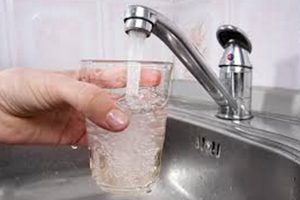
Cleanup Of Contaminated Water From A Toxic Site. North Carolina State University has pledged $1.3 million to continue its clean up of contaminated water from a site where the school dumped pesticides, animal carcasses and other waste more than 25 years ago. The money will pay for 17 extraction wells that will be used to pump […]

Cleanup Of Contaminated Water From A Toxic Site. North Carolina State University has pledged $1.3 million to continue its clean up of contaminated water from a site where the school dumped pesticides, animal carcasses and other waste more than 25 years ago.
The money will pay for 17 extraction wells that will be used to pump thousands of gallons of tainted water from a 1.5-acre site near the RBC Center, the arena shared by the school and the NHL’s Carolina Hurricanes. The school has already spent about $2.5 million monitoring the cleanup, which could take decades to complete.
“They have a real soup out there,” said Jack Butler, Superfund section chief for the state Department of Environment and Natural Resources.
The school’s agriculture and science labs dumped chemicals, acids and animal carcasses at the site between 1969 and 1980, before current federal regulations prohibited the practice. Many of the carcasses, ranging in size from rats to sheep, contain low-level radioactive waste.
The grassy area, surrounded by a padlocked fence, was listed among the country’s most polluted sites in 1986.
The contaminated groundwater has not endangered area residents but has slowly seeped through bedrock toward Richland Creek, a tributary of Neuse River, according to state and environmental officials.
The planned water-pumping system was outlined 10 years ago but delayed after the university requested time to show the chemicals would degrade naturally, said Michael Townsend, project manager for the Environmental Protection Agency.
In 1999, the school mixed 2,200 tons of cement into the contaminated ground to try to slow its leak into groundwater while the chemicals continued to break down. The effort to show chemicals would naturally dissolve was unsuccessful, Townsend said.
“Basically, they (the EPA) lost their patience and wanted it done,” said Duane Knudson, manager of environmental affairs at the university.
“It isn’t that we didn’t want to do this,” Knudson said. “It’s just that we didn’t want to get into a long-term pump and treat system that wasn’t ever going to result in a cure.”
The extraction wells have been drilled and construction will begin later this summer on the waste treatment system. The project should be operating by October.
“These things tend to run a long time,” Knudson said. “I don’t want to say forever. The conversation is in decades, 20 to 30 years.”
The university now ships hazardous and chemical waste to landfills and companies that recycle chemicals, Townsend said.
The personal injury attorneys at Parker Waichman LLP offer free, no-obligation case evaluations. For more information, fill out our online contact form or call 1-800-YOURLAWYER (1-800-968-7529).


